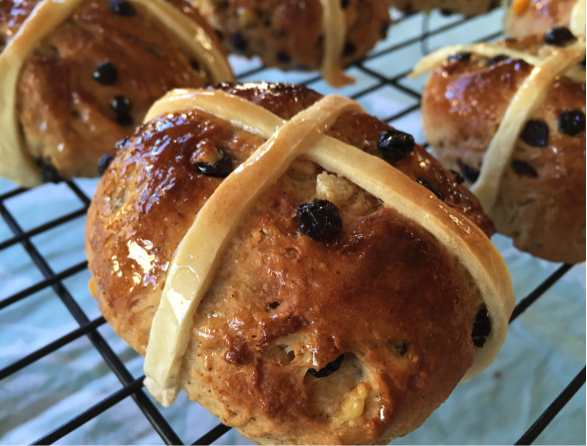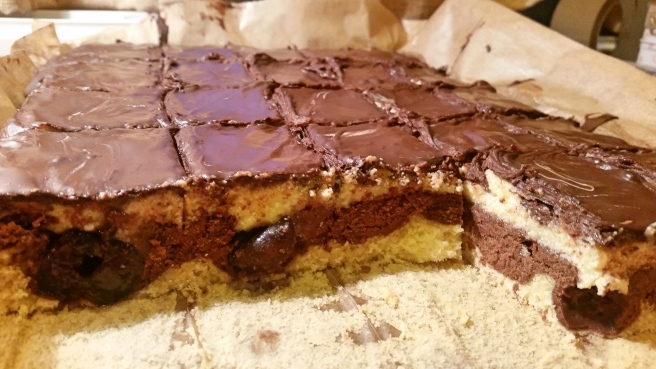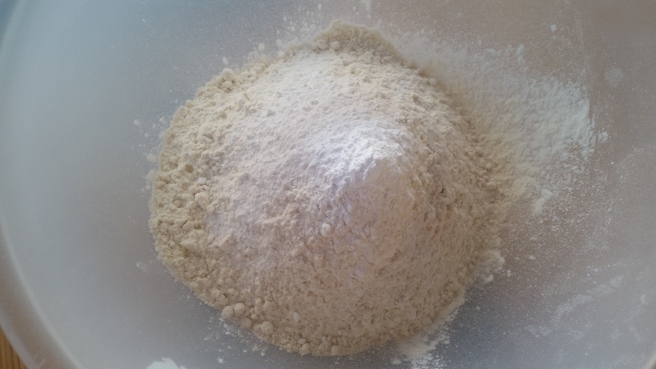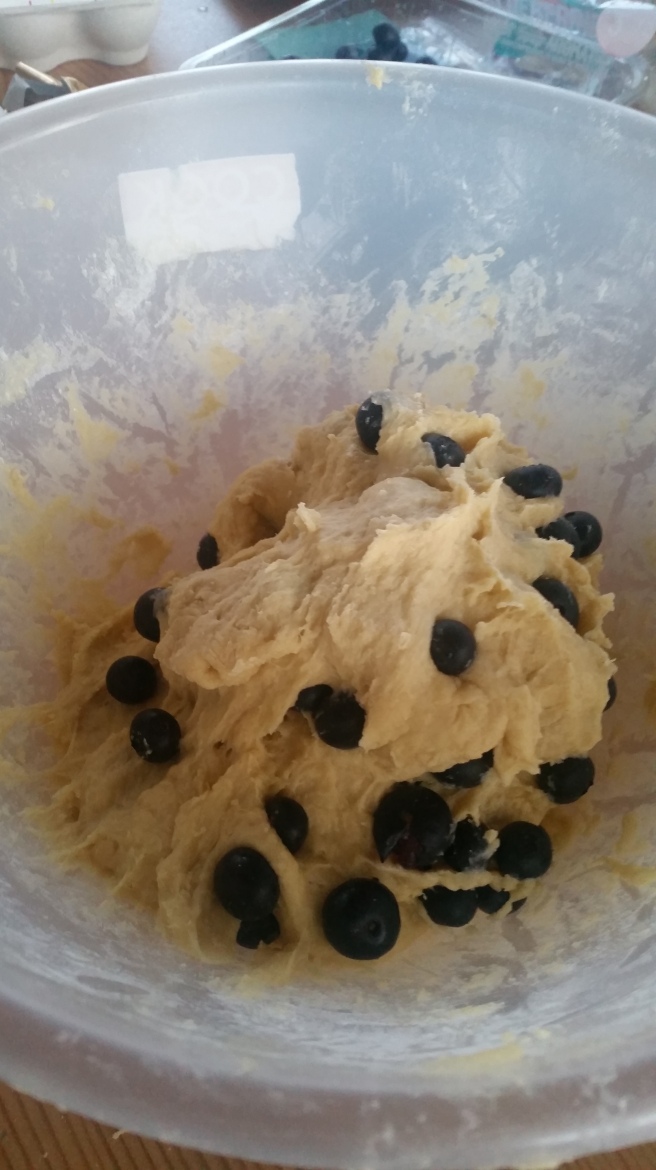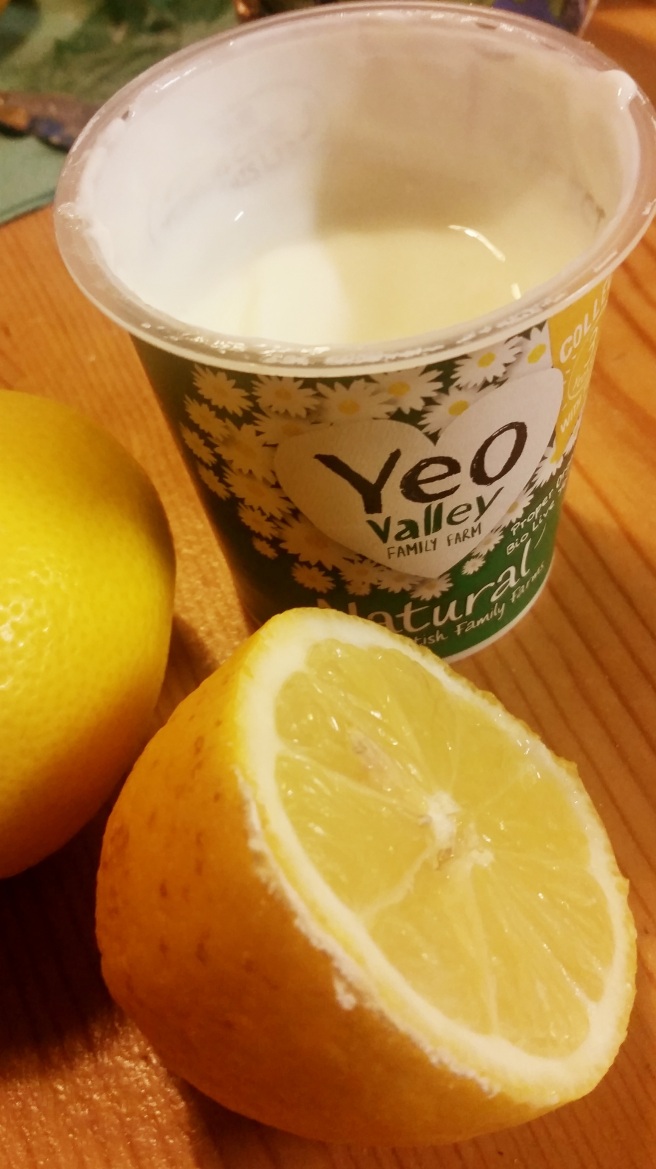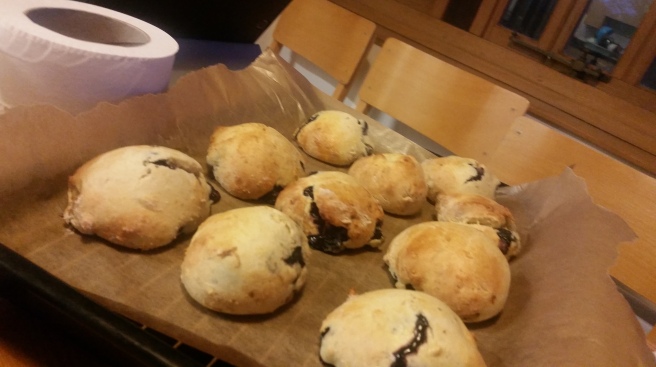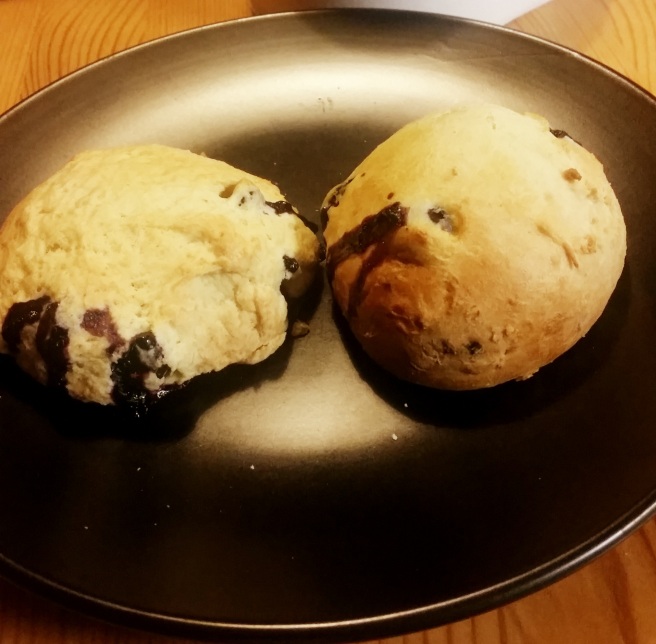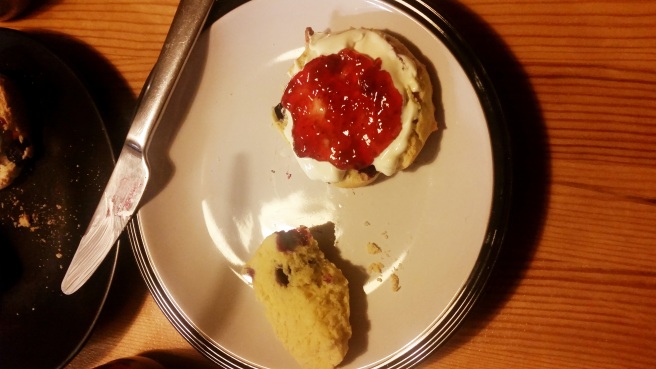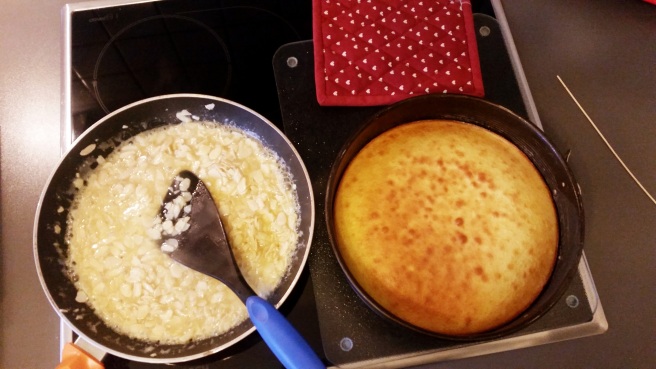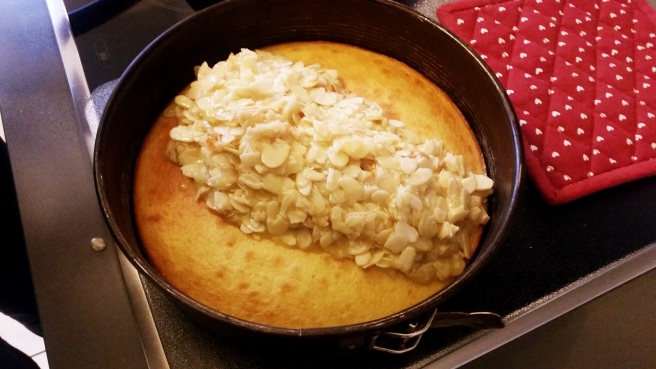
Life has been crazy recently! Labs have just taken over my life slightly and then also there is sun. As soon as the sun is out all I want to do in my free time (except for baking obviously) is be outside, go for strolls around the park, go for a nice cold pint in a pub and eat as much ice cream as I can. Even though I kept on baking over the last couple of weeks, I just didn’t have the time to blog about it.
2 weeks ago, a friend and I baked for the Garden Party of our college in Oxford. We spend 2 nights and 1 morning in the kitchen baking, with always fun company, some banging 90s tunes and were surprisingly little stressed considering the amount of baking we did (check out those pictures of the baking).
But now I am back with a new blog post for ya! Last weekend, I really wanted some cookies- and rather than walking all the way to Tesco to buy some, I had all the ingredients I needed to make some chewy (and soft at the same time) double chocolate cookies. The cookies are super chocolatey and go very well with ice cream (especially on a warm summer day- just saying). And on top of that they are also very easy to make and not a lot of time effort (even better for a sunny day).
Preparing time: 15 minutes and 30 minutes chilling
Baking time: 12 minutes
Difficulty level: simple
Ingredients
250 g Butter
250 g white sugar
2 eggs
125 g cocoa powder
215 g flour
2 tsp. baking powder
150 g milk chocolate, cut into chunks
1 tsp. vanilla
pinch of salt
Mix the butter and sugar together until creamy. If you just gotten the butter out of the fridge, put it in the microwave for a couple of seconds to make your life easier. Then add the vanilla extract and salt. Add the eggs one by one and mix until you can see air bubbles forming.
In a separate bowl, weigh out the flour, baking powder and cocoa powder. Add slowly to the butter mixture and mix carefully (if you turn on the mixer too high you will basically flour your whole kitchen- and who wants to clean that up right?!).
So once you added the flour mixture, chop the chocolate into small pieces and add. Now just use a spatula to fold in those chocolate chunks. The dough now has become quite sticky and it won’t be easy to mix. If you feel like you can hardly mix it, then just add a bit of milk.
Now chill the dough for about 30 minutes and either go and lie in the sun or watch some Netflix and drink tea (totally dependent on the weather of course).
Preheat the oven to 180 °C and take the dough out of the fridge and place baking paper (or if you ran out of it just like I did, butter the baking tray). Now, using your hands, form small balls out of the cookie dough and place them on the tray.
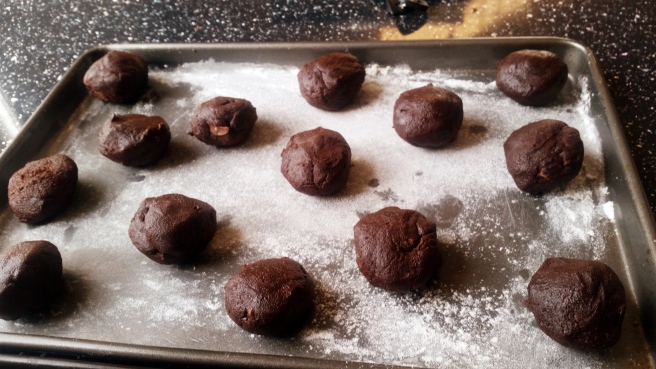
Bake the cookies for 12 minutes, they will still be quite soft by the time you take them out but that is exactly what you want.
Now go, enjoy them either warm or cold, with ice cream or caramel sauce – maybe even chocolate sauce?!






















